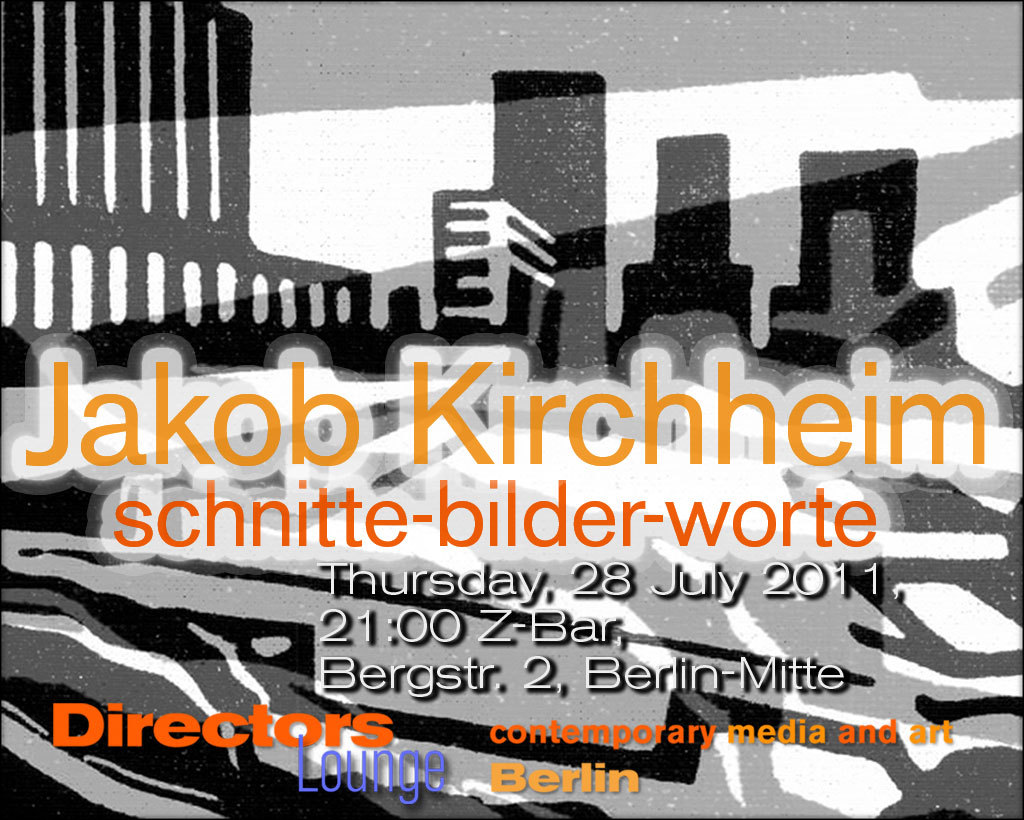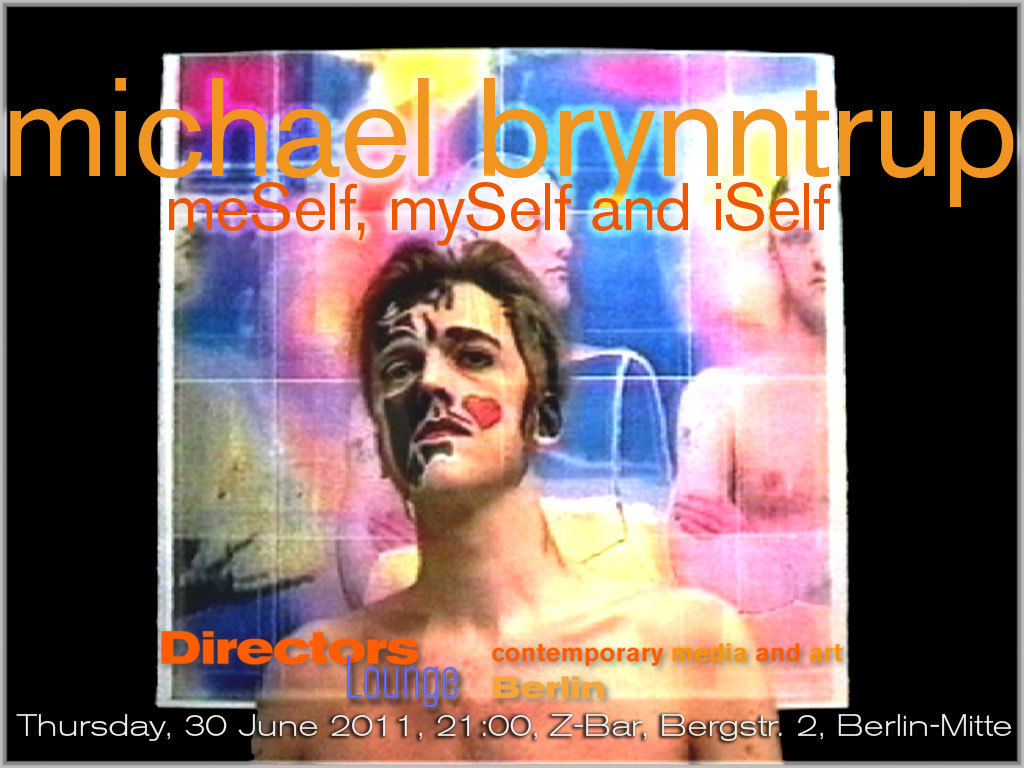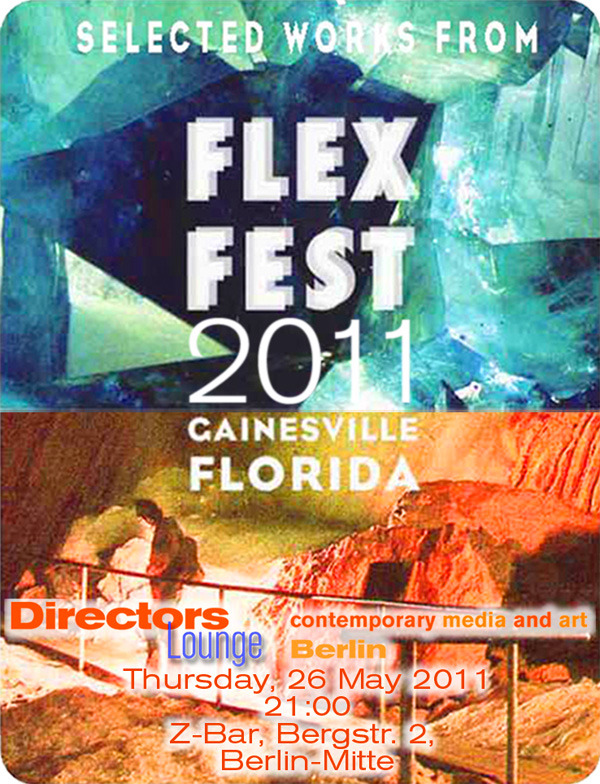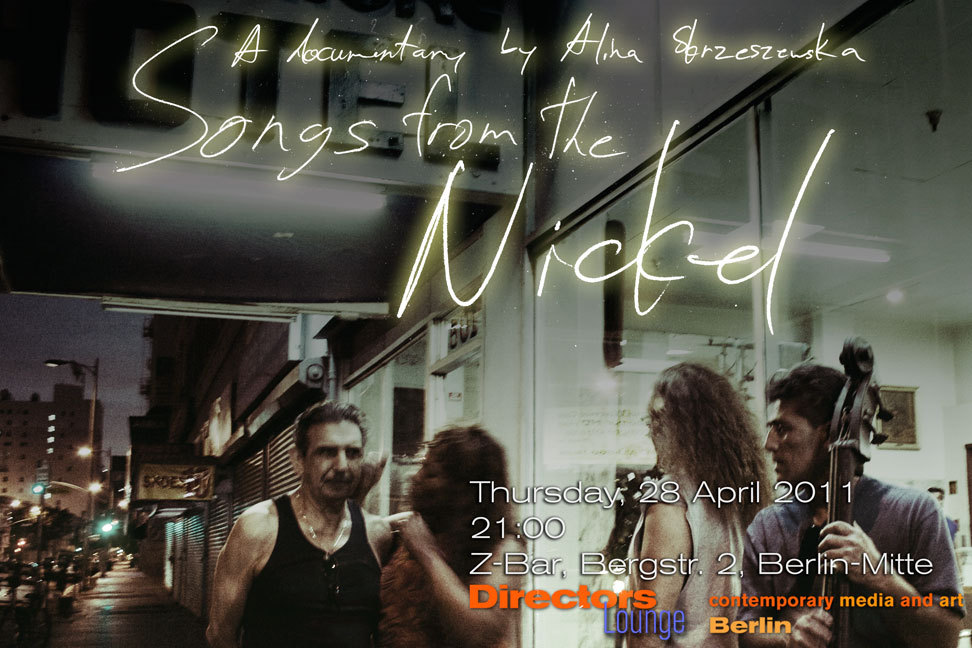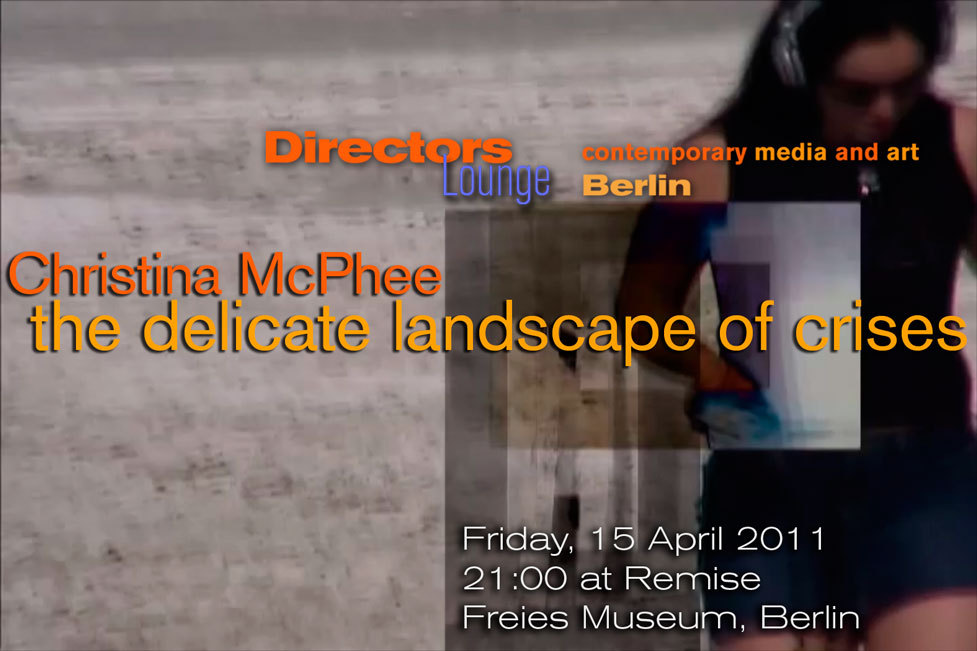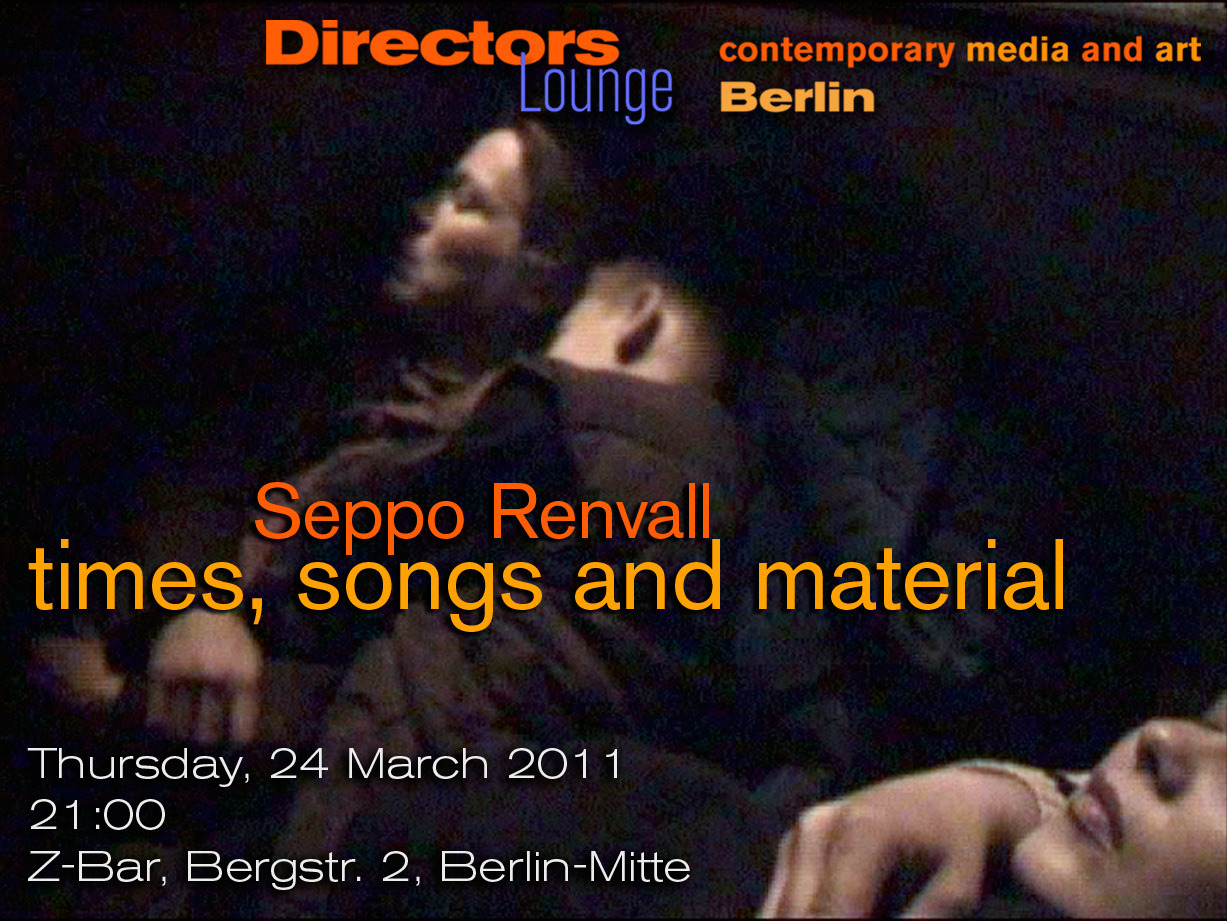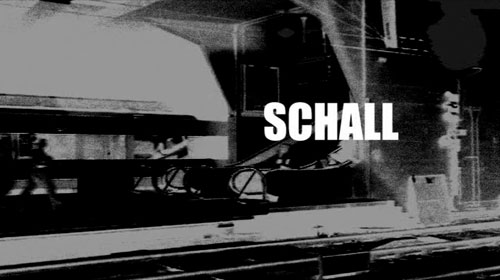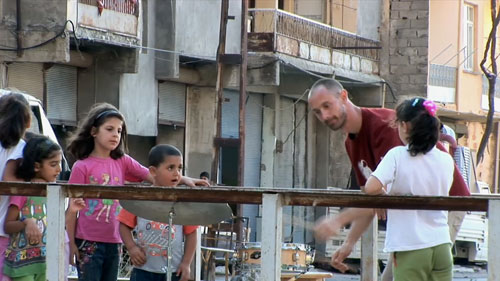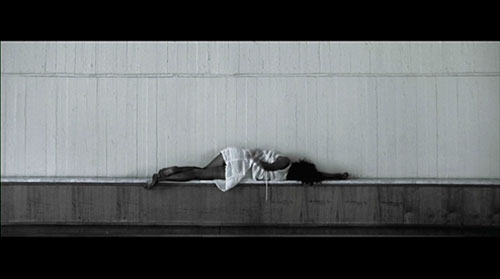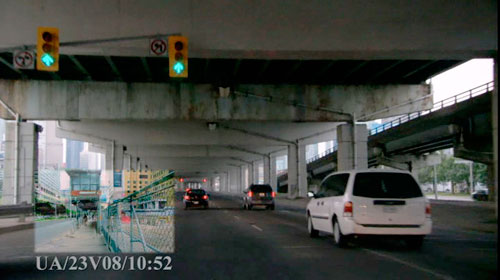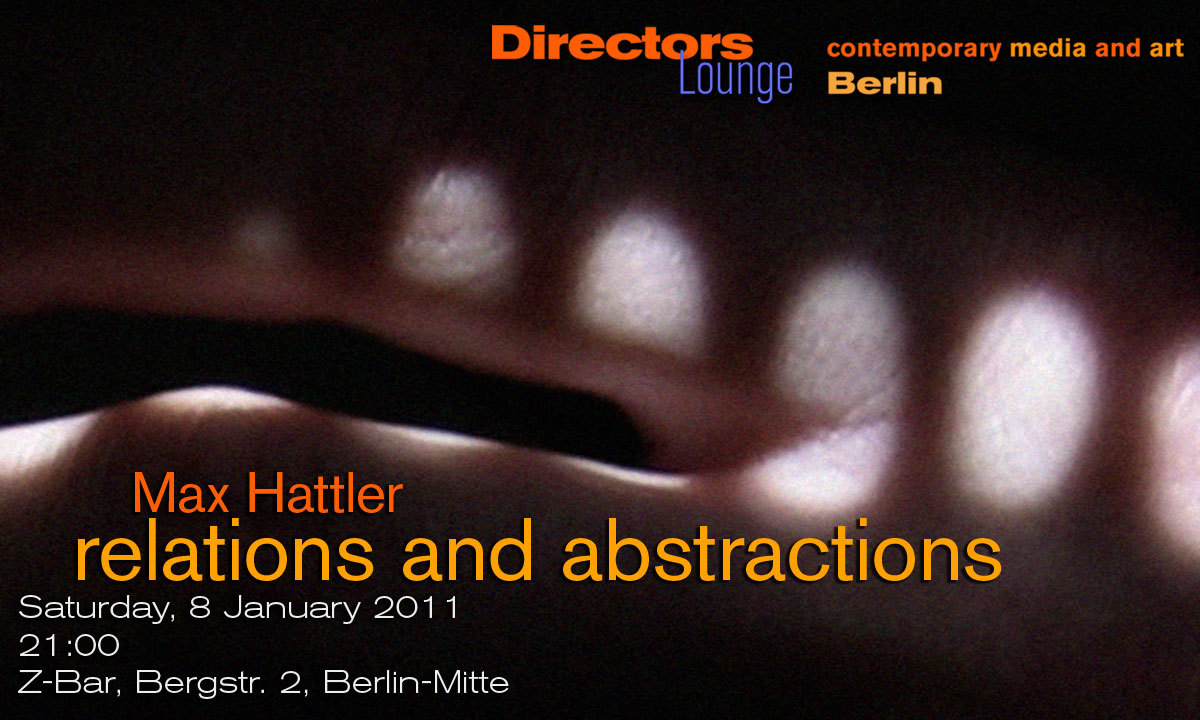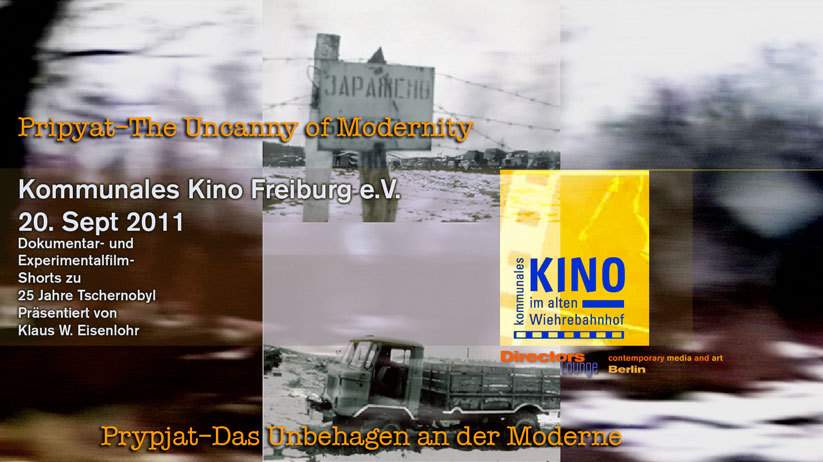
SCREENING CHERNOBYL 25
Presented by Klaus W. Eisenlohr. The film program comprises films representing visions of the abandoned city of Pripyat by artists and documentary filmmakers, and imaginations of futures under the influence of “peaceful nuclear energy”.
Gair Dunlop confronts historical material about the glorious future that Dounreay Atomic Research Establishment would provide with his own camera footage, shot after the shut-down of the research power plant (Atom Town: Life After Technology). Now a ruin that still radiates, Dounreay does not attract nuclear tourists, unlike Chernobyl, which has become a popular destinations for photographers and other contemporary “explorers”. Julio Soto presents his imagination of cities after a climate or nuclear catastrophe in virtual images (Invisible Cities) just before he went to Pripyat himself in order to make a documentary about past and present inhabitants of the forbidden zone (Radiophobia). Vanessa Renwick in glorious pictures celebrates the good-bye to Trojan, a power-plant in the US that may be the equivalent to Brokdorf in Germany concerning the long-lasting local protests, but which was never going on-grid (Portrait #2: Trojan). And Thomas Bartels reflects in poetic pictures of 16mm film the mood of the year 1986, now almost a documentary of the mood in Germany under the influence of the clouds of Chernobyl (Zwischenlandung).
Chernobyl may have become the symbol for the crumbled future visions of modern prosperity made possible by peaceful nuclear energy, and for the apocalyptic imaginations of a modern catastrophe. However, it has also triggered an array of aspirations for adventures. Maybe less so the actual melted and broken reactor, shielded under a crumbling “sarcophagus” but the ghost town Pripyat, once a young modernist city, has become a collective iconographic symbol for the uncanny modernity that seems to attract people in many ways.
pripyat — the uncanny of modernity
Tuesday, 20 Sept 2011
19:30
Kommunales Kino Freiburg
Alter Wiehre Bahnhof
Urachstr. 40
79102 Freiburg im Breisgau
press links:
Program infos:
http://www.richfilm.de/filmUpload/1-framesPripyat.html
http://www.koki-freiburg.de/detail.php?fnr=3843

